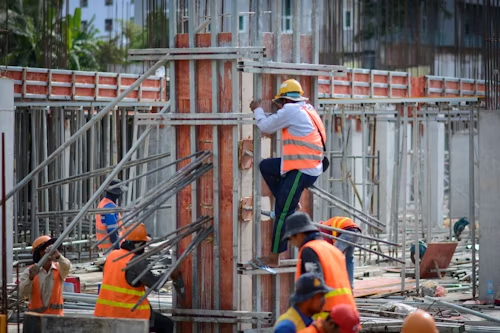.png)
Legislation reintroduced in Congress last month could offer major relief to construction firms struggling to find labor amid escalating immigration enforcement. The bill proposes the creation of the H-2C visa, a temporary program aimed at filling nonagricultural jobs that employers have been unable to staff for months — a move that industry leaders say answers both workforce shortages and the need for lawful hiring options.

The proposal comes at a time when U.S. Immigration and Customs Enforcement has increased worksite raids. Contractors are reporting that detentions and deportation proceedings are leaving critical projects understaffed.
In one of the most notable cases, federal agents arrested 475 workers at a construction site in Georgia on Sept. 5, many of whom were South Korean nationals. White House border czar Tom Homan said the Trump administration intended to escalate worksite enforcement efforts, signaling that more raids are likely.
With an estimated 23% of the U.S. construction workforce lacking authorization, the issue has become a flashpoint for both immigration policy and economic productivity.
On Sept. 18, Rep. Lloyd Smucker (R-Pa.) reintroduced the Essential Workers for Economic Advancement Act, which would amend the Immigration and Nationality Act. The bill would create the new H-2C visa category specifically for nonagricultural sectors like construction.
Under the bill, employers could apply for H-2C visas to fill roles that have remained vacant for three consecutive months or for more than 60 days within a 90-day window, provided the region’s unemployment rate is 7.9% or lower. The initial rollout would cap qualifying positions at 65,000 during the first fiscal year.
Industry leaders are voicing strong support.
“The H-2C visa could be a practical way to bring in legal, vetted workers when jobs stay unfilled for months. It helps stabilize crews, keep projects on schedule, and still ensures American workers remain the first priority,” said John Dorer, CEO of eb3.work, a platform linking employers with foreign nationals seeking legal employment.

Dorer emphasized that the proposal is not a substitute for workforce development, but a necessary supplement. He added, “An H-2C option, with strong compliance and safety standards, could help close the gap. It is not the whole solution, but it can be an important part of a broader strategy that allows construction firms to grow and meet the needs of communities across the country.”
The Associated General Contractors of America has also endorsed the legislation, citing overwhelming evidence of labor strain.
In a statement, AGC CEO Jeffrey Shoaf pointed to a recent survey showing that more than 90% of firms struggle to fill open positions, and nearly one-third report impacts from immigration enforcement.
Shoaf acknowledged that long-term workforce stability depends on restoring career and technical training pathways. “Of course, the long-term solution is for Congress and the Trump administration to work together to reinvigorate our long-neglected career and technical education and training programs,” he said.
But with retirements accelerating and project delays mounting, Shoaf argued that immediate help is essential. “Establishing a visa program for construction occupations provides the kind of lawful, temporary, traceable and taxable pathway needed to serve as a short-term solution while we rebuild the domestic pipeline for preparing new construction workers,” he said.
Originally reported by Zachary Phillips in Construction Dive.